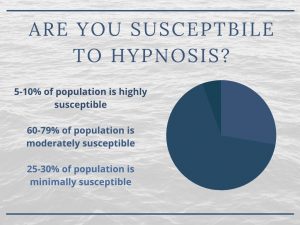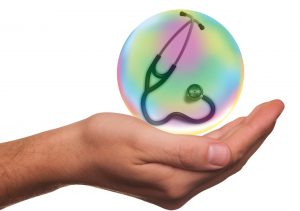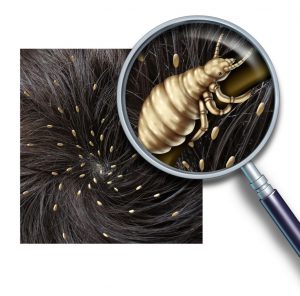Hypnosis dates back to at least the 18th century, when it was used to induce dreams and get to the root of a problem. Nowadays, many people swear by it as a way to help battle obesity, quit smoking, fight phobias, and find relief from other conditions. So have you ever considered hypnotherapy, and have you been wondering whether it’s actually worth your time? Your health insurance plan might actually cover hypnotherapy, but before you make up your mind, find out what the science has to say about it.
Hypnotherapy Explained
Maybe your only experience with hypnosis is seeing it on TV or a magician’s stage, but hypnotherapy is not a stage show. It is a form of psychotherapy, in which hypnosis is used by a hypnotherapist or psychologist during a counseling session to help relax a patient. The therapist will essentially place you in a hypnotic state, or a trance, so that they can help you open up about traumatic or painful experiences, and explore the memories that are hidden from your conscious mind. It essentially seeks to unite your conscious and subconscious minds to help create a solution to a problem.
So what’s the reasoning behind putting you into this state? During hypnosis, the subconscious mind is more active and accessible to the therapist, so you will become more open to your therapist’s suggestions and guidance. Being susceptible in this way will hopefully help you to make positive changes in your life and help you to deal with whatever issue you are going through. Don’t worry though, you will remain in complete control during the sessions; you will be able to understand, comprehend, and remember things – there won’t be any clucking like a chicken, or any weird or inappropriate things going on while hypnotized!
Methods Used During Hypnotherapy
There are two main methods used during hypnotherapy:
- Suggestion therapy– During this kind of therapy, you are put in a trance-like state and the therapist provides you with guidance and suggestions. This is typically the therapy that is used to help control or stop unwanted or unhealthy behaviors like gambling, nail-biting, smoking, etc. Some studies have even suggested that it is beneficial for people with chronic pain.
- Analysis– Also referred to as regression therapy, this is when a therapist digs deep into your subconscious mind to bring out repressed memories from past traumas, all of which could be causing psychological distress, mental health conditions, or problematic behaviors. During this therapy, the psychologist will put you into a relaxed state and then explore past events in your life so that you can move past them. The reasoning behind using this method is that hypnotized individuals are up to 50% more capable of handling painful stimuli.
What Hypnotherapy Can Be Used For

Hypnotherapy is used to treat a wide range of conditions and unhealthy behaviors, and many believe it can help with:
- Cessation of smoking
- Improving sleep and overcoming sleep disorders
- Alcoholism
- Weight loss
- Phobias
- Depression
- Anxiety
- Addiction
- Post-traumatic stress disorder (PTSD)
Does It Work?
So does hypnotherapy actually work? Perhaps you have heard success stories from friends or read a few anecdotes online, but if you are considering it, you should get the facts for yourself. Research has found that:
- Hypnosis has a success rate of 93% after 6 sessions.
- Hypnosis and guided visualization were over 30 times more effective for weight loss than dieting alone. Results from 18 different studies confirmed that those who received hypnosis lost more weight than 90% of those not receiving hypnosis, and they maintained the weight loss two years after treatment ended.
- Hypnosis is 3 times as effective as a nicotine patch and 15 times more effective than willpower for quitting smoking.
- Hypnosis reduces pain and speeds recovery from surgery- hypnosis used in conjunction with local anesthesia was associated with improved intraoperative patient comfort, and with reduced anxiety and pain.
- A 2018 study of burn wound patients found that hypnosis was highly effective in managing pain and reducing the secondary symptoms of anxiety.
- A meta-analysis from 2018 reviewed the findings of almost 400 records, 15 studies, and 17 trials of hypnosis for controlling the symptoms of anxiety. At the end of treatment, the average participant in the 17 trials reported more reduced anxiety than 79% of the control groups.
- A 6-month study in Boston showed that 73% of participants who had chronic fatigue syndrome reported increased energy, more restful periods of sleep, and better concentration at work after receiving hypnotherapy.
Does It Work for Everyone?
Hypnosis is not right for everyone, because some people are unable to or will not allow themselves to fully enter a state of hypnosis. With that being said, approximately 5-10% of the population is highly susceptible to hypnotic suggestions, and even if you’re not in this group, the chances are still high that hypnosis can help you. In fact, around 60-79% of people are moderately susceptible, and the remaining 25-30% are If you’re trying to lose weight, stop smoking, control substance abuse, or overcome a phobia, hypnosis might be worth a try.
Want To Try It?
Hypnotherapy is becoming a much more popular and accepted form of treatment, since it can feel like an “easier” way to help with a condition. If you’re interested in trying it out, it is important to find a licensed therapist; when looking for a hypnotherapist make sure to check their credentials, and ask if they offer a free consultation so you can meet them first. In addition, while checking their credentials, make sure to call your health insurance company to see if the therapist or psychologist is in your network and how much of the session they will cover.
Health Insurance Coverage For Hypnotherapy

Depending on where you live, a session can cost anywhere from $80 to $300 if you don’t have health insurance, but most insurance companies will cover 50 to 80% of the cost of individual therapy with licensed professionals. Your health insurance will cover hypnotherapy on a case-by-case basis, if it is deemed medically necessary for any acute or chronic pain, or if it will help you get healthier by quitting smoking or losing weight. If you have a great plan that covers hypnotherapy, you might be able to get your sessions for the cost of a copay or a 10-50% coinsurance, depending on the insurance company.
Interested in trying out hypnotherapy? We don’t blame you: with such a high success rate, it certainly is very enticing. If your current health insurance plan does not cover it, and if you want to find one that does, EZ can help! Our agents work with the top-rated companies in the country and can compare available plans in your area in minutes. We will provide you with your own personal agent who will work hard to find an affordable plan that covers hypnotherapy, so you can get the help you need. Our services are free, and come with no hassle or obligation. To get free instant quotes, simply enter your zip code in the bar above, or to speak with a local agent, call 888-350-1890.












